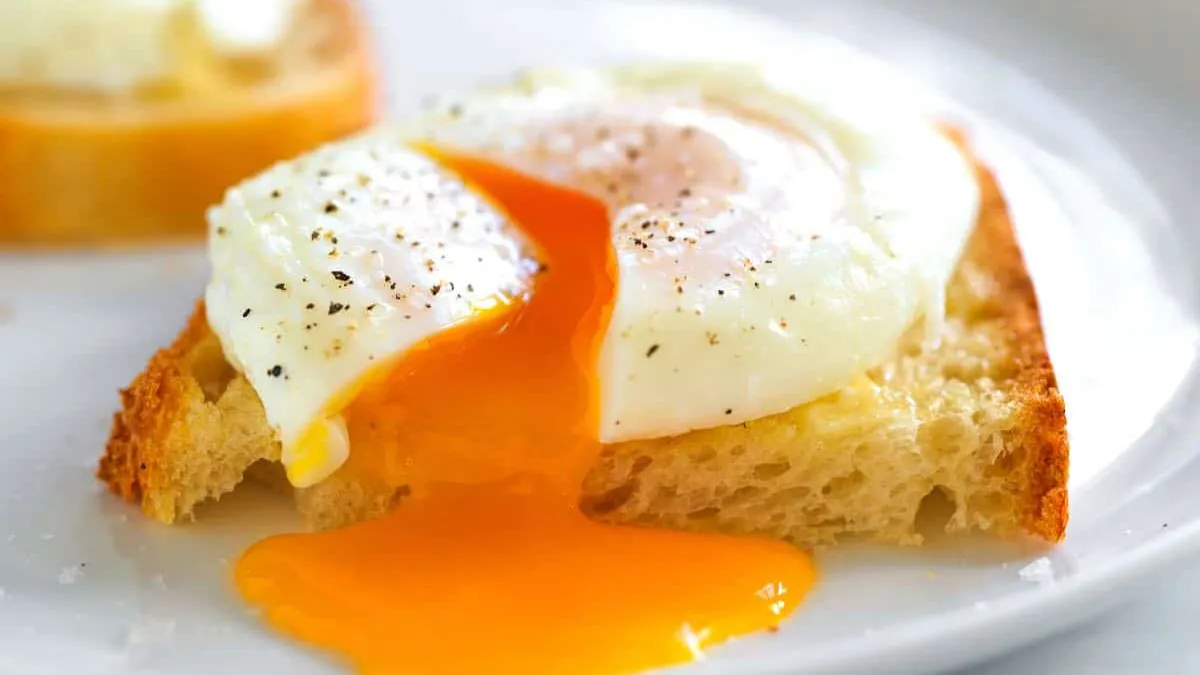There’s something enchanting about poached eggs — the way they lie like clouds, soft and gentle, with yolks that melt like sunshine across the plate. This dish is a spoon of comfort to me. It transports me back to lazy mornings at my grandmother’s, sunlight pouring in through the kitchen, while she sang along to tunes on the radio by herself. She always declared, “If you can poach an egg, you can cook with love.” And every time I pour one into a pot of simmering water, she’s near to me.
This dish is a celebration of the fresh, in-season goodness of spring. Whether resting atop a bed of buttery asparagus, serving as a crown for a fresh spring salad, or sat atop sourdough and a smear of smashed avocado, poached eggs are a touch of sophistication and warmth at the table — requiring only 3 ingredients and a whole lot of love.
Ingredients (Serves 2)
4 fresh eggs (the more fresh, the better — you’ll see why!)
1 tablespoon of white or apple cider vinegar
Water, sufficient to fill a half-gallon saucepan
Optional: salt, pepper, fresh herbs, chili flakes, toast, vegetables
Step-by-Step: Poaching the Perfect Egg
Step 1: Heat the Water
Fill a saucepan approximately 2/3 of the way full of water and bring it to a simmer — you want to have small bubbles, not a hard-boil.
Step 2: Add Vinegar
Pour in the vinegar. This causes the egg whites to stick together in a hug around the yolk. Don’t worry, you won’t even know it’s there.
Step 3: Gently Crack the Egg
Crack one egg directly in a small bowl or in a ramekin. This will allow you to slide it gently into the water subsequently without breaking the yolk.
Step 4: Make a Gentle Swirl
Use a spoon to create a slow whirlpool in the water. This will wrap the white around the yolk in a compact shape.
Step 5: Slide in the Egg
Gently place the egg in the center of the swirl and let it work its magic. Cook it for 2.5 to 3.5 minutes, or however runny you want the yolk to be.
Step 6: Drain and Rest
Remove the egg using a slotted spoon and briefly let it drain on a paper towel. Repeat the process for the other eggs.
Tips & Tweaks
For beginners: Use the freshest eggs available — they will stick together better.
Dairy-Free Pleasure: Use herbs and olive oil to top poached eggs rather than butter or cheese.
Gluten-Free? Opt to skip the toast and serve atop roasted rounds of sweet potato or sautéed greens.
Vegan substitute: Although not a poached egg, cubes of silken tofu, warmed and flavored with black salt (for the eggy flavor) provide a wonderful plant-based topping.
What to Serve It With
- Sourdough or rye toast topped with avocado and lemon zest
- Roasted seasonal vegetables such as asparagus, cherry tomatoes, or squash
- Quinoa grain bowl filled with wilted spinach and a drizzle of tahini
- On a crisp spring salad of baby greens, radishes, and balsamic
The Experience
Imagine the first bite: the yolk bursts open like golden lava, flowing onto toasted sourdough, a touch of vinegar zing and the fragrance of fresh herbs wafting up onto your plate. It’s warm and soft, but with a touch of crispness derived from cracked pepper or chili flakes. Each forkful tastes satisfying — not only to your body, but also to your soul.
Your Turn!
Now it’s your turn to bring a little bit of this delightfulness to your kitchen. Cooking solo, entertaining at brunch, or treating someone special — poached eggs always deliver. Try it, get creative with your favorite toppings, and don’t forget to take a photo and tell us in the comments below how you personalized it. I want to know how you put your twist on it.
Good poaching, friend 🥚💛
Let’s continue cooking with love.
